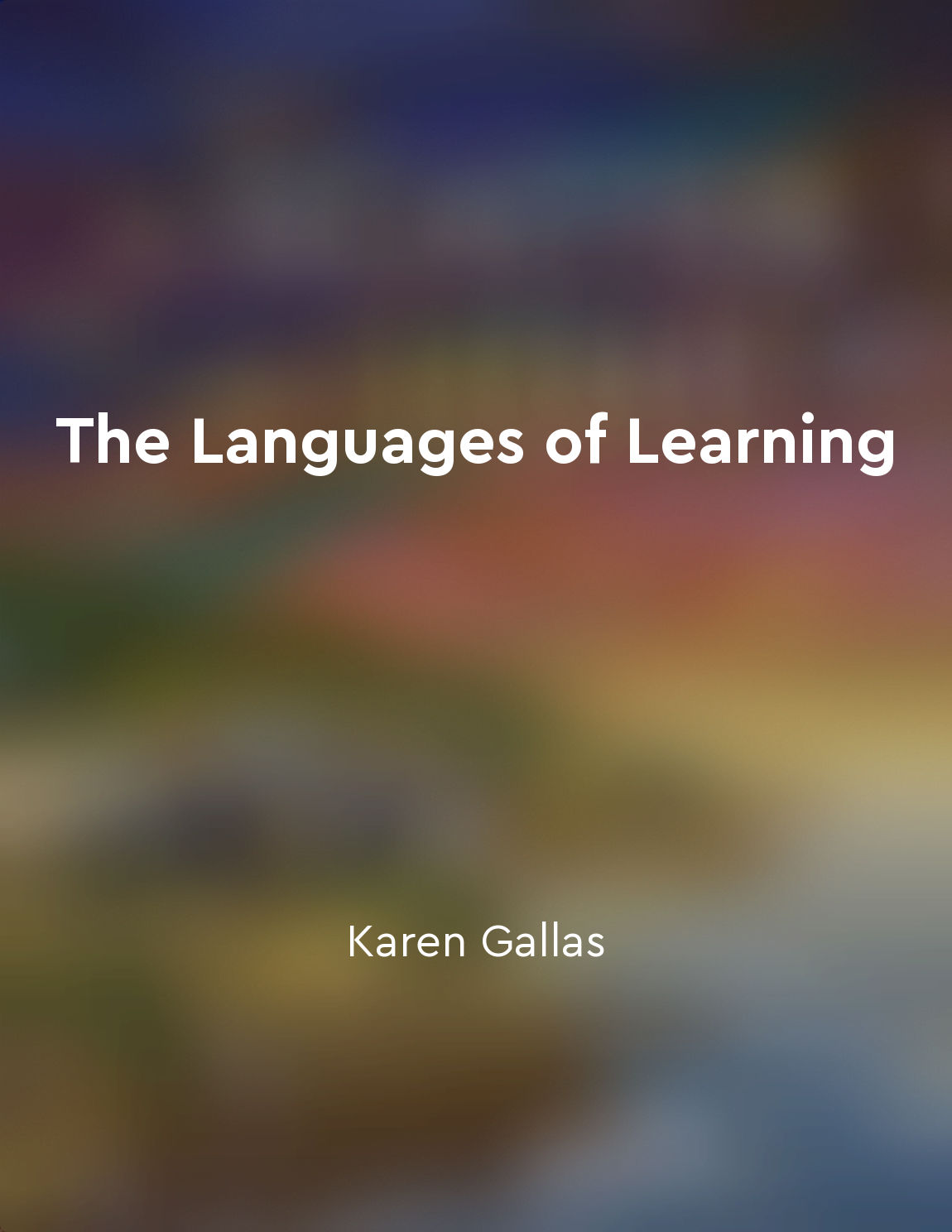Teachers must recognize the connections between different languages of learning from "summary" of The Languages of Learning by Karen Gallas
Teachers are called upon to be deeply attuned to the diverse languages of learning that students bring into the classroom. These languages are not just limited to verbal expressions, but encompass a rich tapestry of symbols, gestures, and cultural codes that shape the ways in which individuals make meaning of the world around them. By recognizing and valuing these multiple languages, educators can create more inclusive and dynamic learning environments that honor the unique ways in which each student navigates the process of learning. In order to effectively recognize the connections between different languages of learning, teachers must first cultivate a mindset of curiosity and openness. This involves setting aside preconceived notions about what constitutes valid forms of communication and instead embracing a more expansive definition of language that encompasses a wide range of modalities. By approaching the classroom with a spirit of inquiry, educators can invite students to share their diverse ways of knowing and meaning-making, thereby enriching the collective learning experience for all involved. Furthermore, teachers must be willing to engage in ongoing reflection and self-assessment in order to deepen their understanding of the diverse languages present within their classroom. This process of introspection requires a willingness to challenge existing assumptions and biases, as well as a commitment to continuous learning and growth. By interrogating their own beliefs and practices, educators can cultivate a more nuanced awareness of the complex interplay of languages that shape the learning environment, allowing them to better support the diverse needs and strengths of their students. In practice, recognizing the connections between different languages of learning requires a multifaceted approach that integrates a variety of instructional strategies and modalities. This may involve incorporating visual aids, movement activities, or hands-on experiences into lesson plans in order to appeal to students with diverse learning styles and preferences. By providing multiple entry points for engagement and understanding, teachers can create a more inclusive and accessible learning environment that honors the unique strengths and capabilities of each individual learner.- The recognition of the connections between different languages of learning is not merely a theoretical concept, but a practical imperative for educators seeking to create inclusive and equitable learning environments. By valuing and leveraging the diverse ways in which students communicate and make meaning, teachers can foster a more responsive and empowering educational experience that honors the rich complexity of human expression and understanding.


